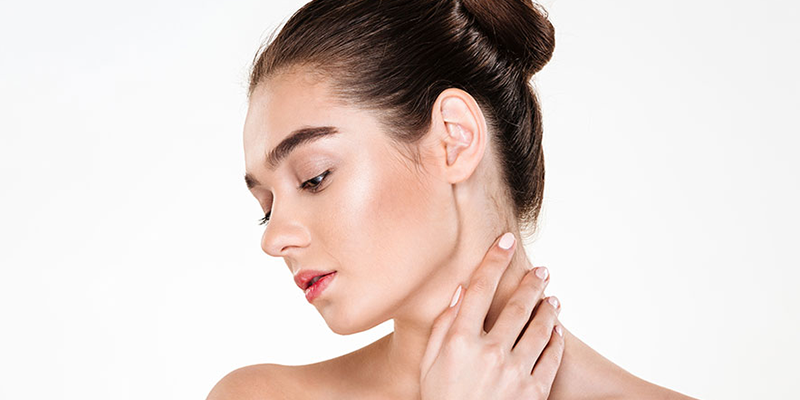Laser fractional resurfacing treatments stand at the forefront of modern dermatological solutions, offering a revolutionary approach to skin rejuvenation. This advanced technique targets minute sections of the skin with precision-controlled laser energy, promoting rapid healing and stimulating collagen production. Unlike traditional resurfacing methods that require extensive recovery time, fractional technology allows for quicker healing by preserving surrounding tissues. Ideal for addressing wrinkles, scars, and uneven skin tone, these treatments have become a preferred choice for individuals seeking effective cosmetic improvements without significant downtime.
Understanding Fractional Laser Resurfacing
Targeted Treatment
Fractional laser resurfacing pinpoints damaged skin. It leaves the surrounding healthy skin untouched. This precision helps in a speedy recovery.
The process targets only a fraction of the skin at a time. It’s like fixing small patches rather than repainting an entire wall. The treatment is effective for scars, wrinkles, and sun damage.
Collagen Production
This treatment boosts collagen production in the skin. Collagen is vital for firm, youthful skin.
After treatment, your body starts to naturally rejuvenate itself by producing more collagen. Think of it as fertilizing a garden so that new plants can grow healthier and stronger.
Non-invasive Solution
Fractional laser resurfacing offers a non-invasive approach to tackle various skin issues. No cuts or needles are involved.
-
Pros:
-
Minimal downtime
-
Safe for most skin types
-
Can be customized based on individual needs
-
Cons:
-
Temporary redness or swelling
-
Multiple sessions may be needed for best results
It’s suitable for treating acne scars, age spots, fine lines, and other blemishes without surgery.
How Laser Skin Resurfacing Works
Laser Technology
Laser skin resurfacing utilizes advanced technology. It employs microscopic laser columns to reach deep into the skin. This method is precise, affecting only targeted areas.
YAG lasers are often used in this process. They work effectively by penetrating the skin without harming surrounding tissues. This precision promotes faster healing compared to older methods.
Healing Process
The treatment triggers the body’s natural healing mechanisms. It stimulates the production of new cells to replace those damaged by aging or sun exposure.
This process involves two key stages:
-
Immediate response where damaged cells are removed.
-
Long-term rejuvenation as new collagen forms, improving skin texture and firmness.
Patients typically notice improvements within a few weeks, with full benefits visible after several months.
Benefits of Laser Skin Resurfacing
Wrinkle Reduction
Laser skin resurfacing significantly reduces wrinkles. This laser therapy targets the epidermis, encouraging new collagen formation. Collagen is crucial for firm, youthful skin.
The process promotes the growth of new skin that’s smoother and less wrinkled. The difference can be seen in areas prone to fine lines and deeper wrinkles alike.
Scar Improvement
Scars from acne or minor injuries often become less noticeable after treatment. By removing damaged layers of skin, laser fractional resurfacing treatments encourage healing. This results in a more even skin texture.
Patients report a marked improvement in both the appearance and feel of their scars. It’s a preferred method for those seeking minimal invasiveness with effective outcomes.
Sun Damage Repair
Exposure to the sun can cause significant damage over time, leading to discoloration and premature aging. Laser therapy helps by removing layers affected by sun damage, revealing healthier skin underneath.
It also improves overall skin tone, making it look more vibrant and youthful. Regular use of sun protection post-treatment is essential to maintain these benefits.
Procedure of Laser Resurfacing
Initial Steps
The laser fractional resurfacing treatments begin with thorough cleansing. A professional cleans the target area to remove any dirt, oil, or makeup. This step ensures that the laser can work effectively.
Next comes numbing. A topical anesthetic is applied to minimize discomfort during the procedure. Patients usually wait for it to take effect before proceeding.
Laser Application
Once prepared, the appropriate laser system is selected based on the patient’s skin type and treatment goals. The CO2 laser resurfacing technique is a common choice due to its precision and effectiveness in removing the outer layer of skin.
The actual application involves directing a focused laser beam at the skin. This process can last from 30 minutes up to two hours, depending on how large an area needs treatment.
Laser fractional resurfacing treatments are performed as outpatient procedures. This means patients can go home shortly after completion.
There’s minimal downtime involved, allowing most individuals to resume their daily activities quickly.
Side Effects and Complications of Fractional Laser Treatment
Common Side Effects
Fractional laser treatment works by targeting small areas. This precision reduces side effects. Yet, some are common.
Redness and swelling often occur after treatment. They usually last a few days. Mild discomfort is also typical but manageable with over-the-counter pain relievers.
Proper aftercare is crucial for healing. Keeping the skin clean and moisturized helps. Avoiding sun exposure speeds up recovery too.
Rare Complications
In rare cases, complications can arise from fractional laser treatments.
Infection is one such complication, though it’s uncommon with proper care. Temporary pigmentation changes may also happen, especially in individuals with darker skin tones.
Scarring is extremely rare but possible. Following post-treatment instructions carefully minimizes this risk. To prevent these issues:
-
Choose an experienced practitioner
-
Follow all aftercare instructions closely
Candidate Suitability for Laser Skin Resurfacing
Ideal Candidates
Laser fractional resurfacing treatments work best for certain people. Those with fair to medium skin tones often see the most benefit. This is because their skin responds well to the treatment’s light and nm wavelength.
The process can significantly improve the texture of their skin. It does this by boosting collagen production in the dermis. This leads to a smoother face, fewer facial wrinkles, and an overall enhanced tone.
Not Suitable For
However, not everyone is a good candidate for these treatments. People with very dark skin tones should avoid them due to potential pigment changes in their skin. Likewise, if you have active acne or are prone to cold sores, this might not be right for you.
A cosmetic surgeon will always conduct a thorough consultation first. They assess your individual suitability based on your skin type, concerns, and health history.
-
Pros:
-
Improves texture.
-
Reduces facial wrinkles.
-
Enhances tone.
-
Cons:
-
Not suitable for very dark skin or active acne.
-
Risk of pigment changes.
Overview of Current Laser Resurfacing Technologies
CO2 Lasers
CO2 lasers stand out in the realm of laser technology. They penetrate deeply, targeting pronounced wrinkles and scars effectively. This system uses fractional technology to deliver precise treatment, minimizing damage to surrounding tissues.
Patients seeking dramatic improvements often opt for CO2 laser treatments. The results are significant but come with longer recovery times. It’s a trade-off many find worthwhile for the sake of rejuvenated skin.
Erbium Lasers
Erbium lasers provide a gentler alternative within laser systems. They’re ideal for treating fine lines and minor texture issues with minimal downtime. These lasers also employ fractional technology but in a way that’s less invasive than CO2 lasers.
This option suits those who need quick recovery without sacrificing effectiveness. It’s popular among patients looking for subtle enhancements rather than drastic changes.
Technological Advances
Recent advances have greatly improved the safety and efficacy of laser treatments across different skin types. Innovations in fractional technology allow for more precise control, reducing risks associated with earlier laser systems.
-
Benefits include:
-
Reduced risk of side effects
-
Shorter recovery periods
-
Enhanced results on various skin types
These improvements make laser fractional resurfacing treatments more accessible and appealing to a broader audience.
Expectations During and After the Procedure
Immediate Effects
Patients might notice redness similar to sunburn immediately after laser fractional resurfacing treatments. Slight swelling in the treatment area is also common. These effects are temporary and part of the healing process.
Doctors often recommend specific products to help soothe these symptoms. It’s essential for patients to follow their doctor’s advice closely during recovery. This ensures a smoother healing phase.
Healing Phase
Visible improvements in the appearance of skin can be seen after the initial healing phase, usually within one week. Patients report increased satisfaction with their skin’s texture and overall appearance as recovery progresses.
The number of sessions needed for optimal results varies among patients. Treatments are generally spaced several weeks apart to allow full recovery between sessions.

Long-Term Results
For long-term results, multiple sessions may be required. The exact number depends on individual conditions and desired outcomes.
Patients should discuss expectations with their doctor beforehand. Understanding the potential need for additional sessions helps set realistic goals.
Recovery time varies but following post-treatment care instructions closely can minimize downtime.
Closing Thoughts
Fractional laser resurfacing treatments represent a significant advancement in dermatological care, offering a promising solution for those seeking to improve their skin’s appearance and health. The procedure’s ability to target specific skin layers with precision ensures enhanced efficacy while minimizing recovery time, making it an attractive option for individuals with various skin concerns. However, potential candidates must weigh the benefits against possible side effects and consult with qualified professionals to determine their suitability. Understanding the technology behind laser resurfacing, its benefits, procedural details, and post-treatment expectations can empower individuals to make informed decisions about their skincare. As the field of cosmetic dermatology continues to evolve, staying informed about the latest advancements and technologies is crucial for those considering this treatment. For further guidance or to explore if fractional laser resurfacing is right for you, consulting with a dermatological specialist is highly recommended.
Frequently Asked Questions
What is fractional laser resurfacing?
Fractional laser resurfacing is a cosmetic treatment that uses lasers to reduce skin irregularities, such as scars, wrinkles, and pigmentation.
How does laser skin resurfacing work?
It works by delivering precise microbeams of laser energy to the skin, stimulating collagen production and promoting skin renewal.
What are the benefits of laser skin resurfacing?
Benefits include improved texture and tone of the skin, reduction in fine lines and wrinkles, minimized scars, and more even pigmentation.
What should I expect during a laser resurfacing procedure?
Expect mild discomfort during the procedure. It typically involves applying a topical anesthetic followed by targeted application of laser energy to your skin.
Are there side effects associated with fractional laser treatment?
Yes. Common side effects include redness, swelling, itching, and temporary pigment changes. Most side effects are mild and resolve within a few days.
Who is an ideal candidate for laser skin resurfacing?
Ideal candidates are individuals with fair to medium complexions seeking improvement for surface-level or moderately deep facial lines or textural irregularities.
Can you describe current technologies used in laser resurfacing treatments?
Current technologies involve ablative lasers that remove thin layers of skin and non-ablative lasers that stimulate collagen growth without removing any skin.





